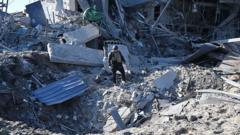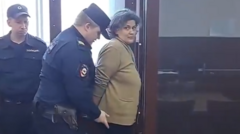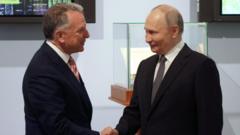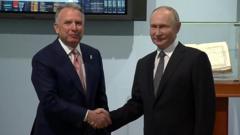Zurab Tsereteli, the monumental Georgian-Russian artist known for his larger-than-life sculptures, has passed away at the age of 91. The Tbilisi-born sculptor, painter, and architect gained notoriety for his grandiose monuments in Moscow, such as the towering 98-meter (321-foot) statue of Tsar Peter the Great, a figure who ironically disdained the city he is immortalized in.
Zurab Tsereteli: Celebrated Sculptor and Political Figure Passes Away at 91
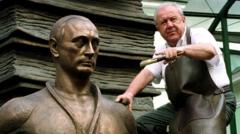
Zurab Tsereteli: Celebrated Sculptor and Political Figure Passes Away at 91
Iconic Georgian-Russian artist dies, leaving behind a legacy of controversial public monuments and artistic achievements.
Tsereteli's rise to prominence coincided with the Soviet era, where he played a critical role as the head designer for the 1980 Olympic Games held in Moscow. His influential presence extended beyond Russia, as he created large-scale artworks in cities worldwide. A longtime associate of Russia's political establishment, Tsereteli once expressed that his portrayal of President Vladimir Putin in bronze was inspired by the leader's "healthy soul."
Known for his close ties to Moscow's ex-mayor Yuri Luzhkov, Tsereteli's elite status allowed him to travel freely, even meeting celebrated artist Pablo Picasso in Paris. The Russian Foreign Ministry commemorated him as “an artist of world renown,” highlighting his unwavering commitment to peace and artistic expression. Although some of his works, notably the Peter the Great monument, faced public backlash—drawing criticism from locals who perceived them as eyesores—his contributions to the art world garnered him considerable respect.
Tsereteli's sculptures are spread across the globe, including a grand tribute to Christopher Columbus in Seville, Spain, and the Chronicle of Georgia monument in his native town of Tbilisi. Notable among his memorials is the Tear of Grief monument in New Jersey, dedicated to 9/11 victims, which was a gift from Russia to the United States. Similarly, his piece Good Defeats Evil, located at the UN Headquarters in New York, depicts St. George conquering a dragon amidst broken missile fragments—a tribute to the historic US-Soviet nuclear treaty.
His artistic legacy includes smaller-scale works, like statues of prominent figures including Princess Diana and Putin himself. Tsereteli was also an accomplished painter, often focusing on floral themes, and played a significant role in the reconstruction of Moscow's Cathedral of Christ the Saviour following its destruction in the Soviet era.
As the art community remembers Tsereteli, they reflect on a man whose provocative creations often sparked debate while also leaving an indelible mark on the landscape of modern art.
Known for his close ties to Moscow's ex-mayor Yuri Luzhkov, Tsereteli's elite status allowed him to travel freely, even meeting celebrated artist Pablo Picasso in Paris. The Russian Foreign Ministry commemorated him as “an artist of world renown,” highlighting his unwavering commitment to peace and artistic expression. Although some of his works, notably the Peter the Great monument, faced public backlash—drawing criticism from locals who perceived them as eyesores—his contributions to the art world garnered him considerable respect.
Tsereteli's sculptures are spread across the globe, including a grand tribute to Christopher Columbus in Seville, Spain, and the Chronicle of Georgia monument in his native town of Tbilisi. Notable among his memorials is the Tear of Grief monument in New Jersey, dedicated to 9/11 victims, which was a gift from Russia to the United States. Similarly, his piece Good Defeats Evil, located at the UN Headquarters in New York, depicts St. George conquering a dragon amidst broken missile fragments—a tribute to the historic US-Soviet nuclear treaty.
His artistic legacy includes smaller-scale works, like statues of prominent figures including Princess Diana and Putin himself. Tsereteli was also an accomplished painter, often focusing on floral themes, and played a significant role in the reconstruction of Moscow's Cathedral of Christ the Saviour following its destruction in the Soviet era.
As the art community remembers Tsereteli, they reflect on a man whose provocative creations often sparked debate while also leaving an indelible mark on the landscape of modern art.






